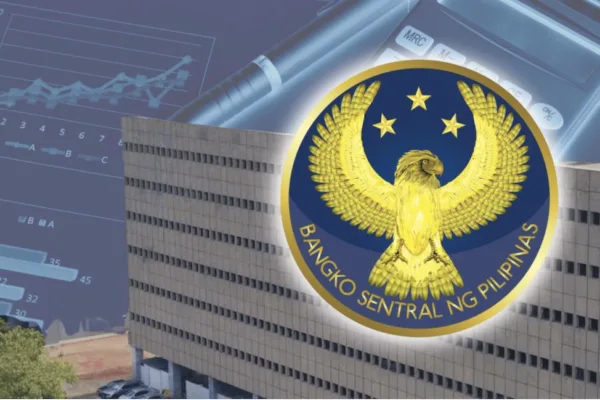The total external debt (EDT) of the Philippines has reached US$130.18 billion by the end of June 2024, an increase of U$1.49 billion or 1.2 per cent from US$128.69 billion at the end of March 2024, according to the latest data from the Bangko Sentral ng Pilipinas (BSP).
Despite the rise in debt, the country’s external debt-to-gross domestic product (GDP) ratio slightly improved to 28.9%, compared to 29.0% in the previous quarter, indicating a controlled and manageable level of debt relative to the country’s economic output.

Earlier this year, the BSP also reported that the Philippine economy grew faster in Q3 but our net external liability position had reached US$50 billion in September.
External debt and economy: Key indicators remain favorable
Although the debt stock rose, other important external debt indicators remained at comfortable levels. The Philippines’ gross international reserves (GIR) stood at $105.19 billion as of June 2024, providing a substantial buffer to cover 3.84 times the country’s short-term debt based on the remaining maturity concept.
Additionally, the debt service ratio (DSR), which measures the proportion of the country’s foreign exchange earnings used for debt payments, improved to 9.5% from 11.1% a year ago, reflecting lower debt service payments in the first half of the year.
These indicators suggest that the country has sufficient foreign exchange reserves to meet its maturing obligations and comfortably service its debt.
Factors driving debt growth
The US$1.49 billion increase in external debt was primarily attributed to net borrowings by the National Government (NG), which raised US$2.61 billion through the issuance of a US$2.00 billion worth of Dual Tranche Fixed Rate Global Bonds under its Sustainable Finance Framework (SFF) and US$611.81 million in borrowings from official creditors.
Additionally, the previous reporting and registration adjustments by borrowers amounted to US$493.28 million, and non-residents’ net acquisition of Philippine debt securities added $238.80 million to the total debt.
However, the rise in debt was partially offset by a $736.65 million negative foreign exchange (FX) revaluation, caused by the appreciation of the US dollar, which reduced the value of borrowings denominated in other currencies.
On a year-on-year basis, the country’s external debt increased by $12.26 billion, or 10.4%, from the $117.92 billion level recorded at the end of June 2023. Private sector borrowings, primarily by banks for corporate expenditures and liquidity, contributed $5.83 billion of this increase.
Public vs. Private sector borrowings

As of June 2024, public sector external debt accounted for 61.3% of the total, rising by $922.95 million to $79.83 billion from $78.90 billion in the previous quarter.
The national government, according to the BSP, continues to tap international capital markets and official creditors to fund infrastructure projects and social services programs, underscoring the government’s reliance on external borrowings to drive economic development.
Of the public sector debt, $73.22 billion, or 91.7%, is held by the NG, with the remaining $6.61 billion owed by government-owned and controlled corporations, government financial institutions, and the BSP.
Private sector debt, on the other hand, increased by $567.15 million to $50.36 billion by the end of the second quarter of 2024, representing 38.7% of the total external debt.
Prior reporting adjustments and the net acquisition of corporate debt securities by non-residents largely drove this rise. Despite this increase, net repayments and negative FX revaluation dampened the overall growth in private sector debt.
Broader economic implications
The growth in external debt reflects the Philippines’ continued efforts to secure funding for critical infrastructure projects and social services. While the debt level has increased, the country’s ability to manage its foreign obligations remains strong, as evidenced by the ample GIR, improved DSR, and controlled debt-to-GDP ratio.
The strategic issuance of bonds under the Sustainable Finance Framework also highlights the government’s commitment to financing projects that promote long-term economic resilience, particularly in areas like infrastructure, which can stimulate growth and create jobs.
However, the debt increase also underlines the importance of careful fiscal management, particularly in light of foreign exchange volatility, which can impact the overall debt burden.
Current creditor composition and currency mix
The country’s major creditor nations include Japan, with loans totaling $14.25 billion, followed by the Netherlands and the United Kingdom, with $4.31 billion and $4.17 billion, respectively. Loans from official sources, including multilateral and bilateral creditors, accounted for $50.14 billion, or 38.5% of the total external debt, underscoring the significance of international financial institutions in funding the country’s development initiatives.
In terms of currency composition, the bulk of the Philippines’ external debt is denominated in US dollars ($100.19 billion or 77.0% of total debt) and Japanese yen ($10.02 billion or 7.7%), while the remainder is distributed across 17 other currencies, including the Philippine peso and the euro.
According to the BSP, while the Philippines’ external debt has grown, the country remains in a stable position to manage its obligations. With prudent fiscal strategies, sustained economic growth, and sufficient foreign reserves, the Philippines can continue to leverage external funding for development while maintaining economic stability.







